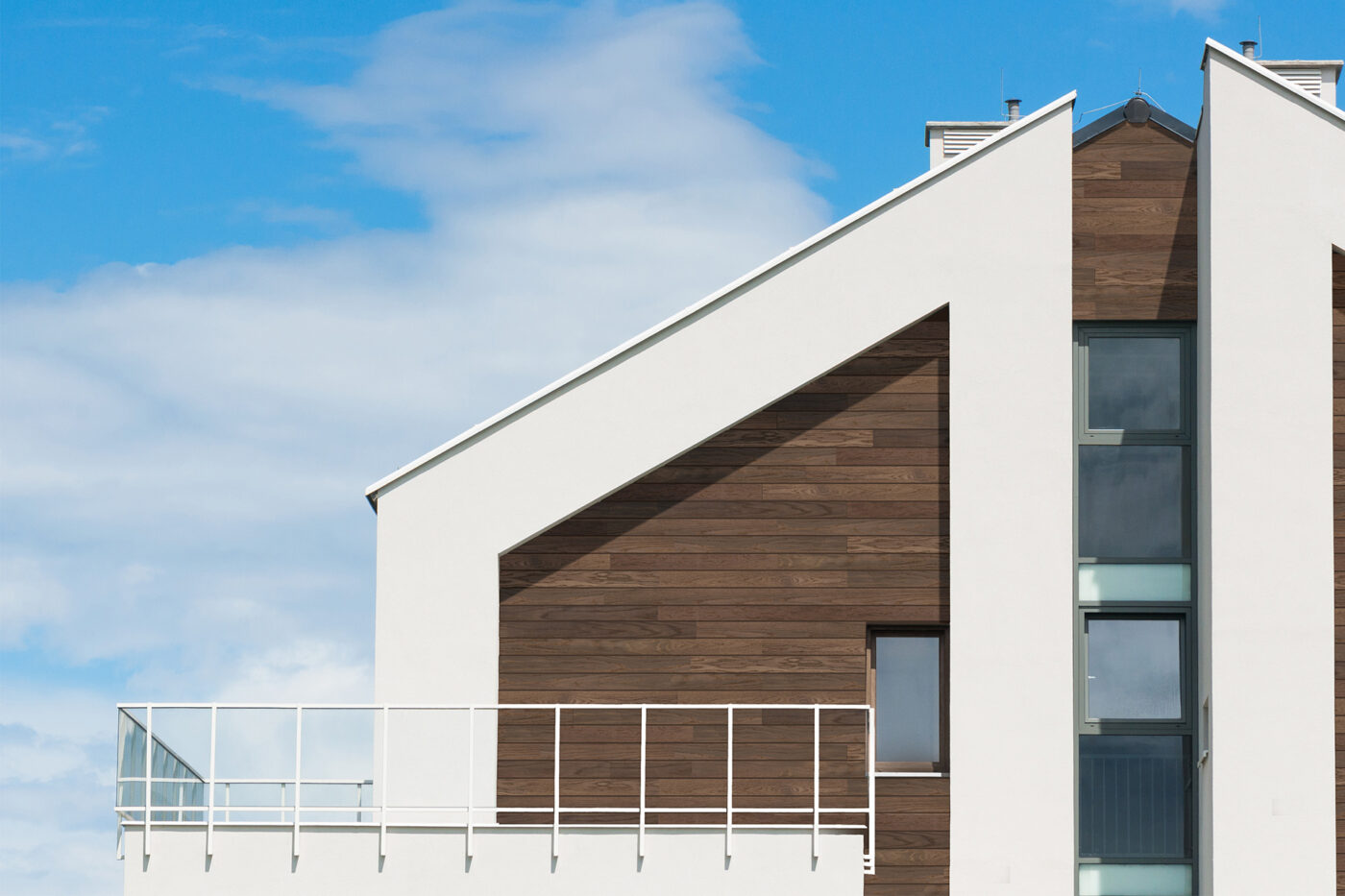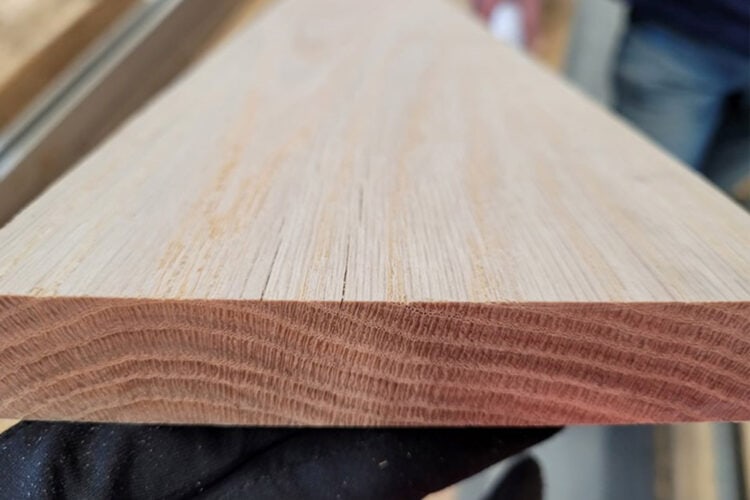Thermally modified oak is a premium hardwood species that is now part of our Benchmark series. Attractive reddish-brown cladding boards are designed for those seeking purity, refined quality and beauty of the natural wood.

Oak (Quercus rubra) is native to North America. This abundant species is characterised by beautiful, clear wood grain and a slightly pink undertone.
Because of its density, strength and durability, oak is widely used timber in North America. The tree has a straight trunk, fewer branches and low internal stress. The latter is particularly important since it ensures that even the long decking and cladding boards remain dimensionally stable and resistant to warping and cupping throughout the products’ lifespan.

Oak is characterized by delicate open rays that run along the oak’s characteristic sprigs and spring wood consisting of large “vessels”. This characteristic reveals the genuine nature of wood – something that no other material can ever imitate.
The colour is the most notable distinction between oak and white oak. Interestingly, white oak is a little darker, with beige and brownish tones, while oak has an underlying shade of salmon pink.
Another important aspect that helps distinguish wood types is the grain pattern. The white oak’s wood grain tends to be more subdued and uniform, while oak has a more pronounced and vibrant grain pattern, which adds to the wood’s unique and charming appeal.
Our Benchmark thermo-wood cladding board series stands for simplicity and natural wood aesthetics. Thermally modified oak is a unique and innovative addition to complement this product range.
Oak is a high-quality hardwood valued for its exceptional properties. Our thermal modification enhances these qualities even more, assuring the first-class durability and dimensional stability of Thermory cladding and decking boards—the properties that are crucial in outdoor applications.
The attractive deep brown tint and natural surface checks make thermally modified oak an appealing cladding and decking solution for those who cherish the inherent beauty of natural wood. Oak cladding gives an exquisite and timeless finish to exterior walls, retaining the elegant look even as the wood ages. Exceptionally weather-resistant and durable, oak decking boards are built to last.
Thermory thermally modified oak has the highest durability class and rot resistance for 25+ years.
Oak ages beautifully. If left untreated, oak will eventually take on a silver-grey tone without losing its durability. Maintenance of your deck or cladding has never been easier.
At Thermory, we are committed to providing solutions that exceed expectations. All our products are rigorously tested and developed to provide functional and eco-friendly wood solutions.
Thermal modification of oak is not widely practised since producing high-quality results is a meticulous and time-consuming process. Slow drying and adopting proper drying methods are critical for achieving quality results. Free water evaporates unevenly during the drying process, and using incorrect techniques leaves the wood moist inside.
Due to the oak’s density, its thermal treatment requires expert skills and knowledge. We started testing our thermal modification process on oak years ago. As the result, we have developed a process that provides all the benefits of thermo-wood while keeping the wood free of surface checks.
To ensure the premium quality of our products, we carefully choose our suppliers and apply strict quality requirements to the sourced timber. When selecting raw materials, we prefer long boards with a clear, knot-free surface. Harvesting area is also an important consideration. The trees growing as far north as possible are most suited to meet Thermory quality criteria because of having fewer surface checks.
Wood cladding is one of the biggest trends in architecture nowadays. It’s a stylish and sustainable way to enhance both the exterior and interior design of buildings, ranging from private homes to large commercial buildings, schoolhouses, and residential developments. Thermally modified oak, in addition to being incredibly beautiful, makes an excellent wall cladding material because it can stand up to harsh weather and the test of time.